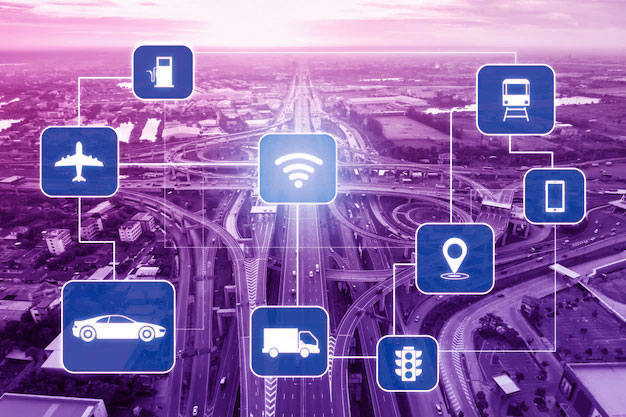In today's rapidly evolving world, the concept of smart transportation has gained significant attention. With the integration of advanced technologies, smart transportation aims to revolutionize the way we commute, ensuring efficiency, safety, and sustainability. This article delves into the objectives of smart transportation, exploring its multifaceted benefits and the transformative impact it holds for the future.
- Enhancing Efficiency:
One of the primary objectives of smart transportation is to enhance efficiency across all aspects of mobility. By leveraging real-time data, intelligent algorithms, and connectivity, smart transportation systems optimize traffic flow, reduce congestion, and minimize travel time. Through the integration of smart traffic management systems, adaptive traffic signals, and predictive analytics, cities can achieve seamless transportation networks, improving overall efficiency and productivity. - Ensuring Safety:
Safety is a paramount concern in transportation, and smart mobility aims to address this objective comprehensively. By utilizing advanced sensors, artificial intelligence, and vehicle-to-vehicle communication, smart transportation systems can detect potential hazards, prevent accidents, and mitigate risks. Intelligent transportation systems can also provide real-time alerts, emergency response coordination, and enhanced driver assistance features, ensuring safer journeys for all road users. - Promoting Sustainability:
In an era of growing environmental concerns, smart transportation plays a crucial role in promoting sustainability. By encouraging the use of electric vehicles, optimizing routes, and promoting shared mobility services, smart transportation reduces carbon emissions and minimizes the ecological footprint. Additionally, smart transportation systems facilitate the integration of renewable energy sources, such as solar-powered charging stations, further contributing to a greener and more sustainable future. - Improving Accessibility:
Smart transportation aims to bridge the accessibility gap by providing inclusive mobility solutions for all individuals, including those with disabilities or limited mobility. Through the deployment of accessible infrastructure, smart vehicles with assistive technologies, and user-friendly applications, transportation becomes more accessible and convenient for everyone. This objective ensures equal opportunities for mobility, fostering social inclusion and enhancing overall quality of life. - Enabling Data-driven Decision Making:
Another key objective of smart transportation is to enable data-driven decision making for policymakers, urban planners, and transportation authorities. By collecting and analyzing vast amounts of data, including traffic patterns, user behavior, and infrastructure performance, smart transportation systems provide valuable insights for optimizing transportation networks, improving infrastructure planning, and making informed policy decisions. This objective ensures that transportation systems are designed and managed based on accurate and up-to-date information.
Conclusion:
Smart transportation is a transformative concept that aims to revolutionize the way we move, ensuring efficiency, safety, and sustainability. By enhancing efficiency, ensuring safety, promoting sustainability, improving accessibility, and enabling data-driven decision making, smart transportation systems pave the way for a more connected, efficient, and sustainable future. Embracing these objectives will not only enhance the quality of transportation but also contribute to building smarter and more livable cities.

